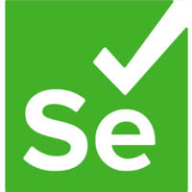

BrowserStack and Selenium HQ compete in the automated testing category. BrowserStack has an advantage in integration capabilities and cross-browser testing, while Selenium HQ offers open-source flexibility and customization.
Features: BrowserStack provides cross-browser testing, cloud infrastructure, and real device testing. Selenium HQ offers an open-source framework, customization options, and scripting control with wide language support.
Room for Improvement: BrowserStack could enhance its pricing flexibility, increase customization options, and improve real-time collaboration features. Selenium HQ may focus on simplifying setups, expanding direct customer support, and enhancing user interface intuitiveness.
Ease of Deployment and Customer Service: BrowserStack excels in cloud-based deployment with responsive customer service, suitable for less technical teams. Selenium HQ requires intensive setup and relies on community support, making it ideal for skilled teams.
Pricing and ROI: BrowserStack offers tiered pricing corresponding to features and usage, which may lead to higher costs but faster ROI. Selenium HQ, being open-source, involves minimal upfront costs, allowing significant long-term returns for those managing setup and maintenance internally.


BrowserStack is a cloud-based cross-browser testing tool that enables developers to test their websites across various browserson different operating systems and mobile devices, without requiring users to install virtual machines, devices or emulators.
Selenium HQ is an umbrella project that includes a number of tools and frameworks that allow for web browser automation. In particular, Selenium offers a framework for the W3C WebDriver specification, a platform- and language-neutral coding interface that works with all of the main web browsers.
Selenium is a toolset for automating web browsers that uses the best methods available to remotely control browser instances and simulate a user's interaction with the browser. It enables users to mimic typical end-user actions, such as typing text into forms, choosing options from drop-down menus, checking boxes, and clicking links in documents. Additionally, it offers a wide range of other controls, including mouse movement, arbitrary JavaScript execution, and much more.
Although Selenium HQ is generally used for front-end website testing, it is also a browser user agent library. The interfaces are universal in their use, which enables composition with other libraries to serve your purpose.
The source code for Selenium is accessible under the Apache 2.0 license. The project is made possible by volunteers who have kindly committed hundreds of hours to the development and maintenance of the code.
Selenium HQ Tools
These three main Selenium HQ tools have powerful capabilities:
Reviews from Real Users
Selenium HQ stands out among its competitors for a number of reasons. Two major ones are its driver interface and its speed. PeerSpot users take note of the advantages of these features in their reviews:
Avijit B., an automation tester at a tech services company, writes of the solution, “The driver interface is really useful. When we implement the Selenium driver interface, we can easily navigate through all of the pages and sections of an app, including performing things like clicking, putting through SendKeys, scrolling down, tagging, and all the other actions we need to test for in an application.”
Another PeerSpot reviewer, a software engineer at a financial services firm, notes, “Selenium is the fastest tool compared to other competitors. It can run on any language, like Java, Python, C++, and .NET. So we can test any application on Selenium, whether it's mobile or desktop."
We monitor all Functional Testing Tools reviews to prevent fraudulent reviews and keep review quality high. We do not post reviews by company employees or direct competitors. We validate each review for authenticity via cross-reference with LinkedIn, and personal follow-up with the reviewer when necessary.